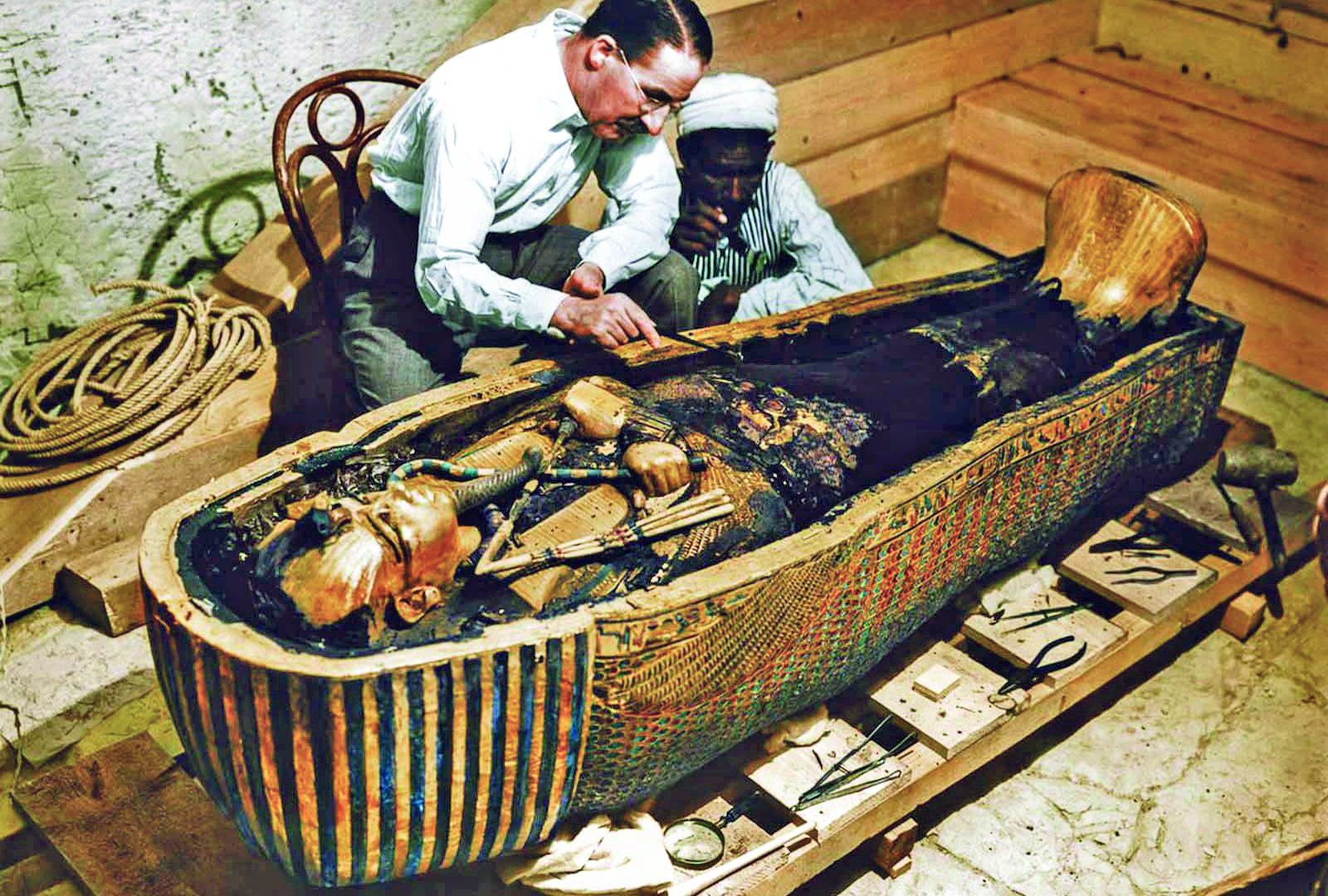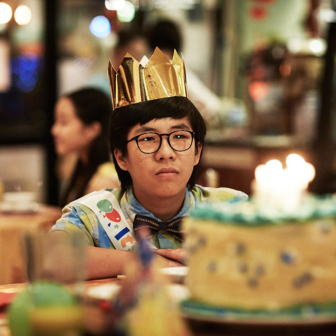Chasuble: Your brother Ernest dead?
Jack: Quite dead.
Miss Prism: What a lesson for him! I trust he will profit from it.
— Oscar Wilde, The Importance of Being Earnest
So begins Robert Garland’s rollicking excursion into death in the ancient world. In What to Expect When You’re Dead, the professor emeritus of classics at New York’s Colgate University ranges over 100,000 or so years of human history and an awfully wide variety of cultural approaches to death. This whistlestop trip takes in ancient Greek, Egyptian, Roman, Mesopotamian, Jewish, Etruscan, Hindu, early Christian and Islamic eschatology… and makes a few detours into death-related practices and beliefs in the neolithic and contemporary worlds.
This is not an expedition for the time traveller keen on cultural immersion. But Garland’s tour does offer the armchair adventurer plenty of instagrammable sights and enlightening historical anecdotes. This sightseer was interested to discover that most pre-Christian people didn’t think much about life after death. Many ancient peoples believed the dead inhabited a realm that was “morally neutral” and “punishment-free” but “unrelievedly dreary.” The Mesopotamians imagined a dismal underground world where the dead ate clay and dust. The Greeks’ Hades was generally envisaged as a dark, draughty, cold place where, according to Homer, the dead lost their strength and wits, and Aristophanes (in his play Frogs) suggested you would find “everlasting shit.”
In a notable exception, the ancient Egyptians posited that if the god Osiris acquitted a person of wrongdoing, they entered Sekhet-Aaru, the Field of Reeds, and enjoyed an idealised version of their earthly life. But this option appears to have been limited to royalty and the wealthy. (It isn’t clear, for example, what, if any, role slaves played.) When something akin to the notion of heaven (the “Elysian Fields” or “Elysian Plain”) entered the Graeco-Roman imagination, it too was reserved for the elite rather than the just.
In contrast, a cornerstone of the new Christian faith was that heaven was a place for all righteous believers — and, in particular, “provided otherworldly compensation” for the poor, suffering and oppressed. According to Garland, in an era before ideas of eternal damnation and hell had become a central part of church teachings, the notion of divine union in the afterlife could appear so enticing it prompted some to contemplate “engineer[ing] an early exit.” St Paul wrote:
If I am to live in the flesh, that means productive labour for me, but I do not know which I prefer. I am caught between the two. What I desire is to depart and be with Christ, because that is far better, but what is more necessary for you [i.e. the growing Christian community] is that I remain in the flesh.
The Church worked hard to counter such thinking and “prevent a wave of suicides.” In 452 the Council of Arles declared self-murder the work of the Devil and, a century later, the Council of Braga deemed that suicides would be denied Christian burial.
While he makes forays into the practices and beliefs of other cultures, Garland’s tour of death in the ancient world is dominated by Egyptian and Graeco-Roman sights. (His discussion of Islamic and Hindu death cultures is particularly sketchy.) In part, he is following his expertise as predominantly a scholar of ancient Greece, but also, he suggests, his quest is limited by the available evidence. He draws on rich scholarship in ancient archaeology, funeral inscriptions, literature and art.
It’s thought the so-called “coffin texts” found written inside Egyptian coffins from 2100 BC were intended to help guide the dead through the challenging final journey to the afterlife. A Roman tomb built to include an oven, stone benches and a dining table is suggestive of the ritual of the living feasting with dead family. A Roman law (ca. 450 BC) prohibiting the women laying out the dead from tearing their cheeks hints at rituals of grieving quite different from our own.
Various artefacts found buried with the dead — from crockery, beds and weapons to chariots, cosmetics and mummified animals — are indicative of the sort of thing it was believed might be needed in the afterlife. More than 5000 artefacts have been documented from the excavation of King Tut’s tomb alone. Contemplating the plethora of items buried with the wealthy, Garland reflects “How did people expect to survive without slaves in the next world?”
One grisly finding suggests some didn’t. A Sumerian grave site excavated in the early twentieth century found an unidentified royal individual buried with the remains of sixty-eight women and six men, all arranged in neat rows. More recent archaeological research seems to confirm early suppositions that they volunteered or were coerced into accompanying their master or mistress to the afterlife.
But for all the rich variations in approaches to dying and death Garland canvases, a central purpose of What to Expect When You’re Dead is to underline “the essential uniformity of the human response to death.” Certainly, this thematic, integrative approach draws out similarities across cultures and (sometimes vast stretches of) time.
For instance, in a couple of paragraphs a discussion of festivals of the dead moves from the Roman Parentalia, a nine-day festival held in honour of their ancestral dead, and the Zoroastrians of the ancient world welcoming the fravashi (good dead) on the last night of the year, to contemporary Mexico’s Dia de los Muertos and Chinese companies using AI to create digital clones of the dead for family reunions. The downside of such a panoramic survey is that it can leave the reader feeling rather disoriented. It also tends to obscure the alterity of the past and the peculiarity of the present.
Take one peculiarity. Many of us in Western societies today are preoccupied with the pain of the dying process in a way the ancients — and even our immediate forebears — would find difficult to comprehend. Of ancient Greece, Garland notes: “I know of no accounts of a dying person’s last days.” As Christianity evolved, however, the last days and moments of a person’s life came to be considered so significant that guides were developed to help the dying, their relatives and the clergy respond to them.
Ars moriendi (art of dying) literature, which emerged in the mediaeval period and continued to be influential well into the nineteenth century, gave people a sense of what to expect as death approached and prescribed prayers, attitudes and actions intended to help guide the dying person towards salvation. This response to death was shaped by an overwhelming focus on the afterlife: on the prospect of ascending to heaven or being condemned to the post-mortem agonies of hell, understood for centuries as a place of physical as well as spiritual torment (which lent the need to save souls, particularly those of the young, a real urgency).
All this changed in the late nineteenth century. Paradoxically, as doctors began to tend to the dying and understand and effectively administer pain-relieving drugs for the first time, people — including the devout — became less anxious about the pain that might follow death and more fearful of that which might precede it. One clear and consequential product of this shift was the emergence of the notion of medically assisted dying, a concept that now profoundly shapes public and policy discussion of death in many Western societies. (As I write, the British parliament has just voted in favour of a bill to legalise assisted dying.)
It’s hard to imagine what our ancient ancestors would have made of such developments. Neither the pain of dying nor methods of pain relief (let alone medically assisted dying) rate a mention in Garland’s trip through death in antiquity. As far as we can tell, these issues simply did not preoccupy people in the ancient world. In a roundabout way this brings us to what Garland believes the ancients can “tell us about death and dying and about facing up to the challenge of both.”
It appears that people in antiquity were ultimately pretty sanguine about the whole business. This sentiment is reflected in gravestones found inscribed with the letters NF F NS NC, which stand for Non Fui. Fui. Non Sum. Non Curo. As Garland explains: “[T]hat is, ‘I didn’t exist. I existed. I don’t exist. I don’t care,’ though Non Curo can also mean, ‘I don’t have a care’ or even ‘I don’t give a damn,’ or, in the contemporary phrasing, ‘Whatever.’”
For Garland, “what the ancient world teaches us first and foremost is to respect and relish life to the full.” The lesson is: don’t get hung up thinking about dying, death or the afterlife, seize life and live it up! In this spirit, Tiberius Claudius Secundus observed: “Baths, wine and women bring about life’s decline. Yet what is life without baths, wine and women?” Or, as the Roman poet Horace put it:
Since life is short, act wisely, strain the wine and cut back on hopes for the distant future. Even while we’ve been speaking, envious time has sped. Carpe diem! Seize the day! Put as little hope into tomorrow as you can.
Garland’s emphasis on the uniformity of the human response to death risks obfuscating the remarkable novelty of such sentiments in this day and age. At a time when Western societies are voting to enable people to “choose” death and experts instruct us to think and talk more about dying, it strikes me that the ancients had a startlingly different take on the end of life. These days we are much more likely to be told we are part of a death-denying society and sombrely enjoined to remember that media vita in morte suma (in the midst of life we are in death) than blithely told to carpe diem. As this book amply demonstrates, the ancients did death differently. Only time will tell whether we profit from their lessons. •
What to Expect When You’re Dead: An Ancient Tour of Death and the Afterlife
By Robert Garland | Princeton University Press | $49.99 | 344 pages




